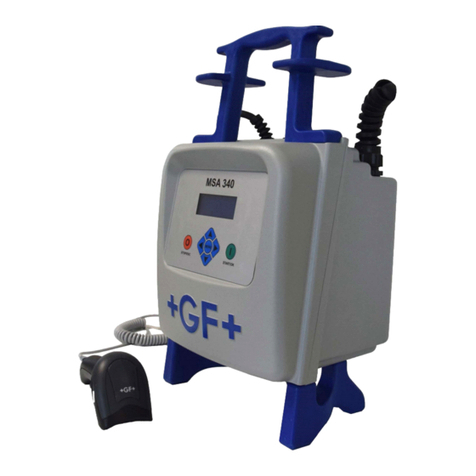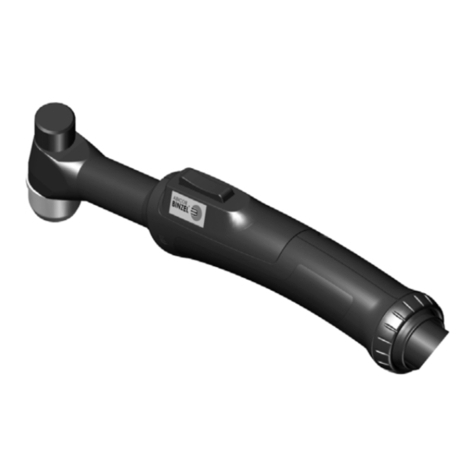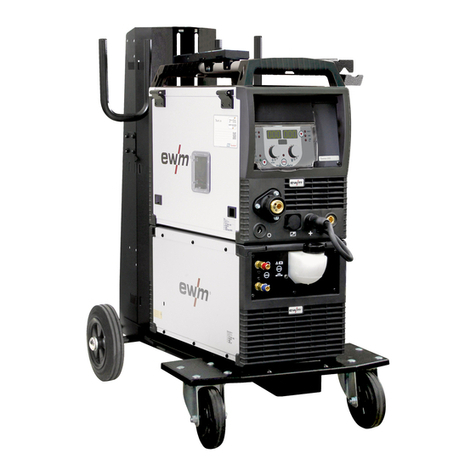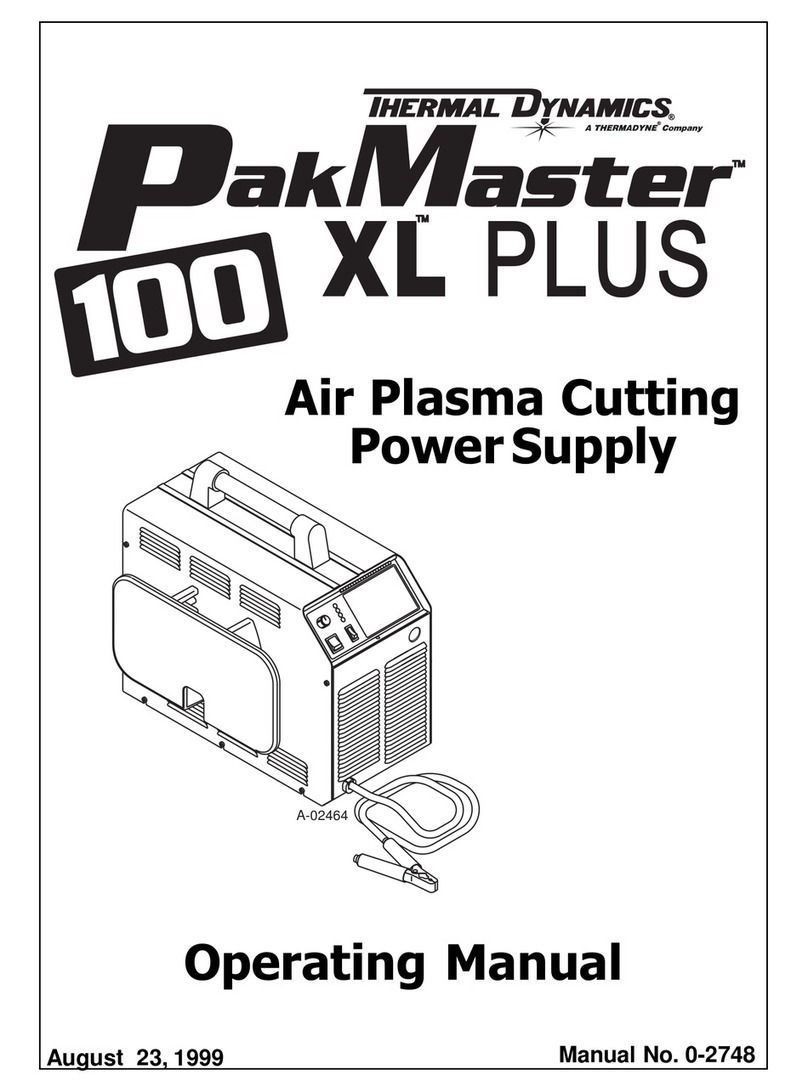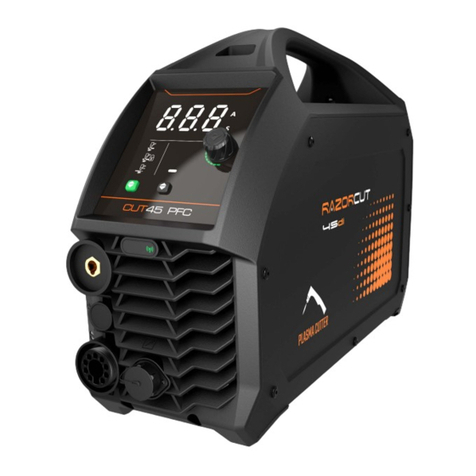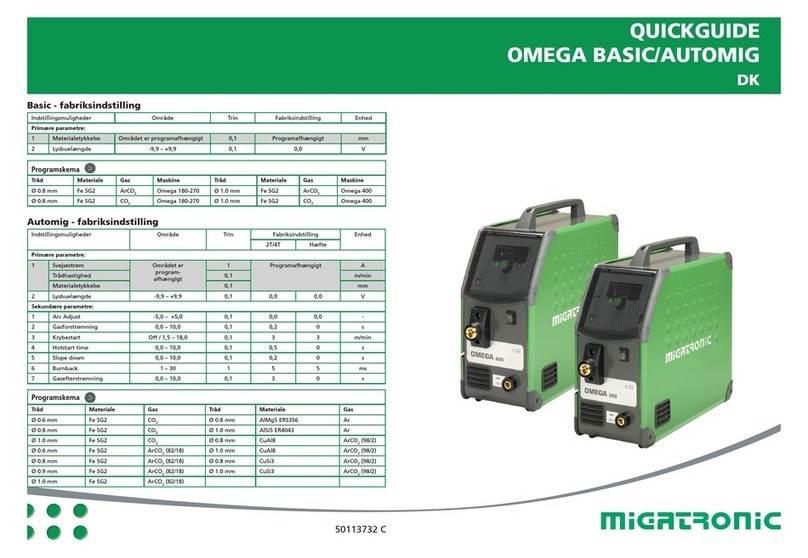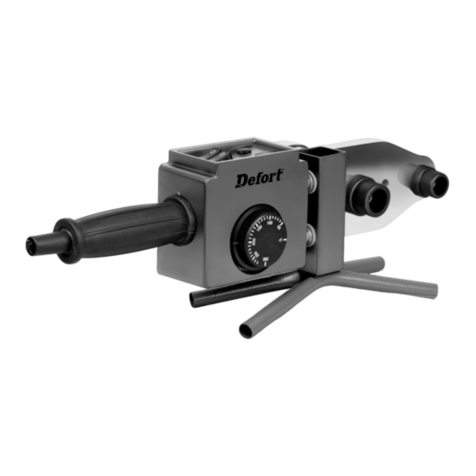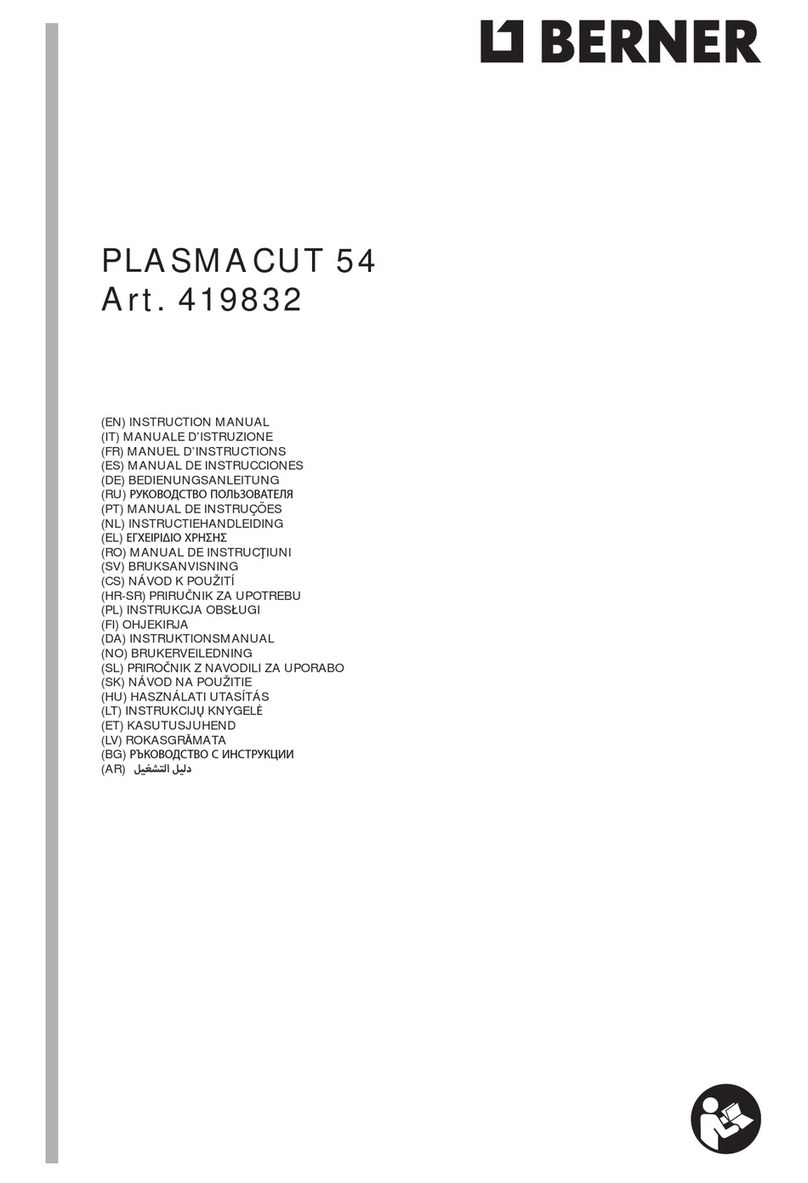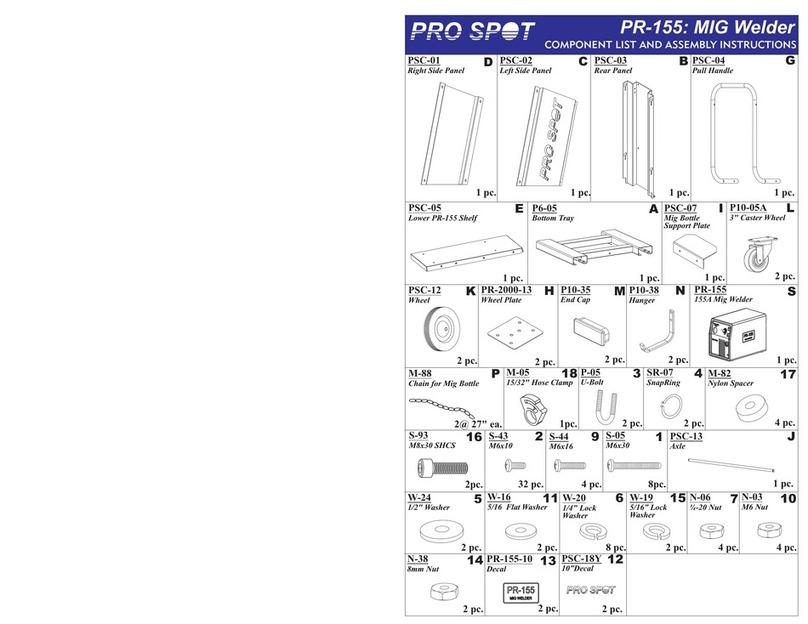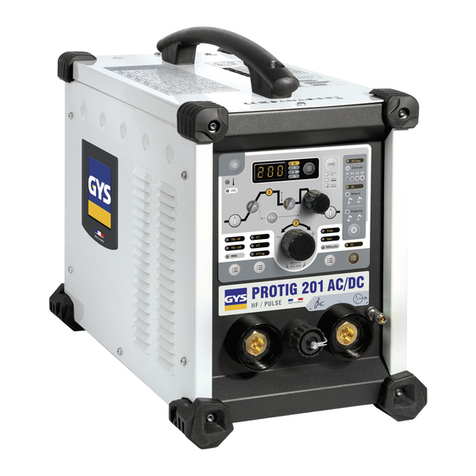
7
WELDING ALUMINUM WITH THE RW-II
GENERAL POINTS FOR THE READY WELDER II
When welding aluminum, be sure to use a contact tip which is .005” larger than the wire diameter itself, and extend
the nozzle out approximately 3/8”, this helps reduce burn back (i.e. melting the wire in the tip). As aluminum con-
ducts heat so rapidly, some users find it preferable to increase the wire speed and move more quickly across the metal
being welded, especially on thin aluminum of 1/8” and less. Please consult the chart on page 17.
Preheating aluminum over 1/4” thick to approximately 250O F., is a widely recognized practice and helps on the start
of the bead while increasing the penetration. Using a heat sink steel plate on the back side of aluminum can help
prevent burn through. Please note: When welding, thin aluminum wire will help to reduce the voltage and amperage.
See thin metal guidelines on page 5. When welding on 1/8” thick aluminum or less, the travel rate must be faster than
on steel and movement must be similar to drawing a line on a piece of paper. When the wire speed is adjusted cor-
rectly there should be no spatter and the weld process should be very quiet, similar to the sound of a gas leak. HINT:
The proper travel is to push with aluminum usually right to left if you’re right handed and left to right if you’re left
handed.
BIRD NESTING
The RW-II has been used for many years with great success. However, we do know that some users are more suc-
cessful than others. Bird nesting may occur when wire stick out makes contact with grounded surface. It is very
important to remember that the wire is electrically hot when there is power to the RW-II unit, unless equipped
with the CS option. This means that if the aluminum wire extending out of the contact tip comes in contact with the
grounded work; it will burn back and weld into the contact tip. Taking this condition into consideration may eliminate
some frustration and excessive use of contact tips. The following suggestions should provide information to make
welding aluminum easy using the RW-II spool gun. As with all installations of weld wire, and especially aluminum,
be sure that the Ready Welder is NOT connected to any welding power source (batteries or DC welding machines).
Once the aluminum wire is installed, install the gas diffuser and contact tip, and then trim any excess wire flush to
the nozzle.
To avoid excessive tip replacement and arc flashing, it is important to remember to pull away from the grounded work
just prior to releasing the spool gun trigger when concluding a weld.
READY TO WELD WITH ALUMINUM
You are now ready to establish an arc and weld aluminum. Depending on the thickness, and mass of aluminum to be
welded, a slight pre heat in the area where you are going to start will help provide a uniform weld bead. Your weld-
ing position should be with a slight tilt of the spool gun into the direction of the travel; this is called the forehand
technique. When you are ready to establish the arc, hold the gun nozzle about 1/4” away from the grounded work
piece. Slowly depress the gun trigger to start the flow of argon shield gas. Now pull the gun trigger and establish the
weld. The weld wire should burn off slightly above the grounded work piece. If excess spatter and a cracking sound
are detected, slow the wire speed just slightly until it smoothes out to a quiet smooth running arc. If you are welding
lighter gauge aluminum, increasing travel speeds will help avoid burning through. In some cases reducing power to
18VDC, a 12 and 6 volt battery in series, will also make it easter to weld.
We know that welding aluminum is not easy for the inexperienced welder, it can also be different for those welders
that are not familiar with the RW-II. There are many satisfied RW-II owners doing an excellent job with welding
aluminum, as it is one of it’s key features. With a little practice, you will be successful at welding aluminum. If you
have any questions or need technical assistance, just call us at (800) 465-9184 or email sales@readywelder.com.
SETTINGS FOR WELDING ALUMINUM
The suggested settings for the RW-II with batteries are as follows; Three charged 12 volt batteries in series will pro-
vide plenty of power for heavy, thick, and large aluminum welding jobs. Two 12 volt batteries in series will provide
up to 275 amps for most jobs. One 12 volt and one 6 volt battery works well on 1/8” or thinner aluminum. Wire sizes
.023” - .030” should be used for thinner sections and .035” - .040” is for heavier sections of aluminum.
When connections are completed and you are ready to begin welding, set the spool gun speed control to 50%. Then
adjust as required, remember, wire size will also have an effect on the welding current.
On DC stick electrode machines; be sure that the AC/DC power supply is plugged into a 115V AC outlet and is con-
nected to the RW-II cable assembly prior to hooking to the CC power source. Because there are a large variety of
these machines, we find it important to understand that wire size and current settings need to be carefully evaluated,
for example, an .023” aluminum wire may require as little as 80-100 amps, so you must make adjustments to the
wire speed and machine settings to get the desired amperage.
(800) 935-3644

